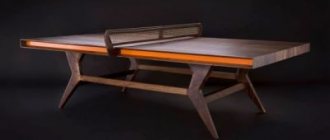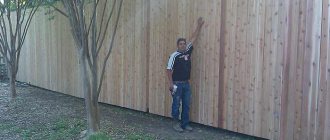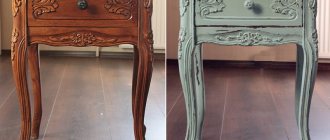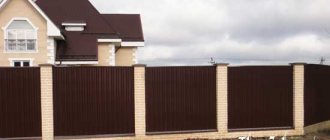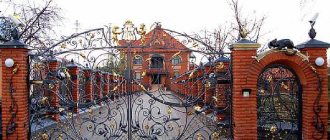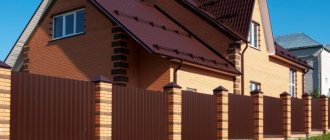Not so long ago, wicker fencing was the main way to separate private property. The emphasized antiquity and natural origin of the raw materials allow the wattle fence to organically fit into the countryside landscape. For this reason, they are in demand in large areas near and between populated areas, as well as in parks and various natural sites. If you need to create a rustic ambiance or the atmosphere of an old courtyard, first of all you should take care of the appearance of the fence. Depending on the direction of the rods, wicker fences are divided into horizontal and vertical. The first option is usually denser and requires a lot more branches. Living fences are also popular. They look fresher, and sometimes are additionally decorated with a hedge of lush plants. The wattle fence is one of the types of structures that can be made without special education.
Peculiarities
An ordinary fence is a light barrier made of shoots and flexible branches. This type of fence features chaotic lines and a makeshift structure. The material is used in its natural form, almost without being processed. Wicker fences are mainly decorative structures, because they are rarely erected to a height of more than 1.5 m. There are also tall modifications, but this option is not always justified, since large dimensions do not solve the problem of the fragility of the material itself, and even in a large fence there will be more cracks and they will, in principle, become larger.
The above nuances imply frequent repairs of the fence, as well as greater openness of the area for viewing by strangers. The main advantages of wicker are the low cost and lightness of the consumables. Wicker fences are still relevant today and can be combined with many styles of site design.
Options for weaving flower beds
Beautiful weaving with rods is done in two ways:
- with vertical broaching of rods;
- from horizontal.
For any of the methods, first, foundation columns are driven into the ground (they are placed at a distance of 30-40 centimeters from each other). For horizontal weaving, weaving rods are stretched between the main posts - they run parallel to the ground. In those places where the rods connect, they are cut at an angle. Subsequent connections are made using wire or flexible bark.
If one twig ends, the next one is drawn from the back side of the column.
With the vertical weaving method, an additional level rail is installed, located parallel to the posts, between horizontally placed slats.
Rods are placed on both sides of the main column. The weaving technique is no different from horizontal weaving.
To make a wicker flower bed beautiful, follow the rules:
- they begin to weave from the thick end of the vine, smoothly moving to the thin one;
- Having completed one row, the next one begins on the other side of the column in order to evenly distribute the thickness of the fence;
- in order to achieve a straight level when weaving, the vine is secured with wire for visual control;
- the end of the vine should not extend to the place where the rod from the previous row ends;
- A wicker flowerbed-basket needs 2 cm flexible rods for the base; for small flower beds 1 cm is enough.
In addition to vertical and horizontal pulling of rods, they also use oblique weaving: several rods are pulled at a time in an inclined row.
Checkerboard weaving is also popular - this is a variant of horizontal braiding, the difference is that the rods are not passed through one column, but through two or three. The result is a complex pattern.
You can often find alternating unpainted and painted rods when creating a wicker composition. When the main willow twigs are stuck into the ground with the root part, they can sprout and turn into a hedge. A wicker flowerbed will take on a completely different look.
Where to use wattle
This is how small plots of land are fenced. The fences are also used as additional fences inside private property. Low variants are also erected along paths. They are often used to separate gardens, vegetable gardens and flower beds from the rest of the space. The fence perfectly demarcates the territory of two neighboring plots. Low and medium-high fences will not cast much shadow in any direction. The branches are excellent for constructing partitions used for zoning areas. This is how summer and children's playgrounds, gazebos, and terraces are set up. Fences are also used to decorate barbecue areas. Low wicker fences can be seen in themed restaurants. Pletni is an important element for expressing ethno-style. At dachas and other properties, a wicker fence goes well with other wicker items - chairs, rocking chairs and tables.
conclusions
Wicker fences for a dacha are one of the simplest and most cost-effective ways to decorate your backyard and create zoning for the area. Solid and tall, it will also become reliable protection.
Correctly selected and well-processed materials, carefully thought out and executed design will make it a durable and strong calling card of the entire site.
- DIY summer house - main stages of construction and decoration (95 photos)
- Growing zucchini - simple and detailed instructions for planting, caring for and harvesting (85 photos)
DIY bird - how and from what to make a beautiful decoration in the shape of a bird (110 photo ideas)
Selection and calculation of material
Such fences are usually woven from willow or hazel. These plants have long, smooth and flexible branches with virtually no transverse processes. This raw material is symmetrical, which is an important plus. Sometimes reed stems are used, as they bend well, but the structure is fragile. Bamboo is especially durable, but you will have to order it. To create wickerwork, vines without bark are used. Calculation of the required amount of material is done “by eye”. One armful is enough for a fence 50 cm high and long. This value is not constant and can deviate towards decreasing or increasing, since the diameter of the rods varies, and the density of the weaving is selected individually. Tyn can be erected from young branches of many bushes and trees, but only at a certain length - from 1 meter. In this case, the work will be more complicated, and the weaving itself will be chaotic.
Other nuances:
- Large, even branches of 4 cm in diameter are used as support. It is appropriate to use metal rods, boards, round beams, if they do not spoil the overall picture and do not stand out too much.
- The step between the crossbars is usually 0.3-0.5 meters.
Preparing to create a fence
Before weaving the fence, the vine is given flexibility using a “steam bath”. You can also leave the raw materials in warm water for several hours so that they gain moisture and become more flexible.
If the fence is constructed from shoots that have been recently cut, then the leaves do not have to be removed from them. Pine branches intended for support are cleared of bark.
To prevent them from rotting, it is recommended to treat their bottom with an antiseptic or tar.
It is also necessary to remove the bark from the willow vine.
Types of weaving fences
Weaving options are distinguished according to several criteria. Depending on the height, it can be high (fence height more than 2 m), medium (1-2 m) and low (below 0.7 m). The first type of weaving involves the creation of permanent structures, for example, an external fence. The second is used to separate zones and separate small summer cottages. The third type is associated with the creation of decorative partitions, fencing flower beds and paths. Depending on the principle of connecting the elements, horizontal, vertical and inclined weaving is distinguished, as well as the less common round and checkerboard. In the first case, we are talking about laying long rods perpendicular to the vertical supports. In the second, horizontal veins act as the basis for the vertical placement of branches. The inclined option implies diagonal placement in increments of up to 0.3 m. According to the installation method, weaving is divided into poles, which is done directly onto the supports, and in sections, when the canvases are woven separately and then placed between the pegs.
Materials for wicker fence
Along with easy assembly, the fence can, if necessary, be dismantled and moved to another location. To extend the service life of the fence and increase reliability, it is better to use PVC pipes and profile metal pipes as posts.
When a palisade is created, each of the sticks must be treated with impregnation or an antiseptic to remove moisture.
A fence assembled from separate sections will last many times longer than a solid wall of branches.
Let's take a closer look at what raw materials are best used for wattle.
Tree branches
Not all breeds are suitable. Dry branches or brushwood are not used. It's too brittle. This type of fence will not last long.
Hazel
A fence made of walnut branches is a durable design option.
The material is harvested in early spring before buds form. You need to cut off young shoots. They are easily intertwined due to excellent flexibility and rarely break. A properly assembled fence turns out to be a reliable wall of branches.
Willow, willow
Low bush-type willows are often found in wetlands. Their scientific name is talnik. They are also suitable for creating hedges.
Willow branches as raw materials have a number of advantages:
- The material is very flexible, which simplifies weaving and allows you to give the structure any shape.
- Wear-resistant. Subject to periodic treatment from moisture.
- All types of willow can be used.
- You can make a living and non-living hedge.
To make a living willow fence, you need to plant young branches in the ground. Willow is easily accepted. It is customary to weave shoots together vertically during growth. A beautiful wicker green wall emerges.
A dead hedge is pre-cut branches intertwined.
You need to prepare for weaving in advance. Willow trees can begin to be cut from mid-autumn to early spring.
The following are used as fence posts:
- thick poles;
- beam;
- fittings;
- PVC pipes, metal.
If the raw materials begin to break after storage in winter, then the craftsmen recommend that before constructing the fence, pour boiling water over the rods and leave it there for several hours.
Vine
Grapevine is an excellent raw material for making wattle.
Among the advantages:
- flexibility;
- long rod length;
- resistance to temperature changes and wear;
- moisture resistance.
Thanks to these advantages, the fence will last for many years. Grapevine fences enclose garden beds, flower beds, and children's playgrounds.
Due to its good flexibility, the vine will make a beautiful arch for the garden, a partition for zoning a summer cottage.
Birch
Birch branches are a unique material. The unique combination of white and black will turn the fence into an elegant decoration.
Thick birch twigs assembled together form a reliable palisade - a blank wall, which, along with a decorative one, also performs a protective function. To increase safety, the owners make the top part sharp in the form of a stake.
For the palisade, long branches are taken - from 1.7 m, with a diameter of 5 cm.
Plants
You can make a beautiful fence not only from tree branches, but also from reeds or cattails. We will discuss the nuances of such a fence below.
Reed, cattail
The reeds look like dense strips. This is free material, which is abundant near bodies of water.
The main disadvantage of reeds is low strength and fragility. When the rods dry out, they become brittle. A finished fence will last a maximum of a couple of years, then it will have to be replaced.
For weaving, reeds are formed into bundles and tied with wire or rope to wooden supports and crossbars.
A reed fence is made low, like a border, enclosing flower beds and flower beds.
Veneer
Veneer is thin strips of wood. It is made from different wood species. For wattle fence it is better to take oak.
The fence is assembled in sections. They are attached to the wooden frame with small nails.
Without experience, weaving will be problematic, so it’s easier to buy ready-made veneer sections. They are also perfect for street gates.
Boards
For braiding, use thin boards, preferably hardwood. Additional supports made of thicker boards are installed between the pillars in a vertical position. All lumber is treated with an antiseptic before installation.
The recommended board thickness for fence sections is from 2 cm.
Step-by-step instruction
The wattle fence is constructed in several steps:
- Preparation of materials: branches of various thicknesses separately for the base and for the canvas.
- Preparing tools.
- Calculations on the territory.
- Creating a foundation.
- Installation of rods on the base.
- Eliminate deficiencies immediately after creating the fence.
The first step is to resolve the issue of choosing raw materials. The final decision should primarily be influenced by the planned configuration and purpose of the wicker structure. Materials need to be collected or purchased. The first option is preferable, since collecting stems does not take much time. However, there are two small periods of time in the year for this. The collected branches are sorted depending on their thickness. Large branches for supports must be processed. Then the exact location for installing the base is determined. The pegs are driven into the prepared soil to the required depth. Further actions depend on the chosen weaving option. Two main ways: horizontal and vertical. The first one is used more often. When the wattle fence becomes dense enough, all that remains is to decorate it. There are few traditional decorative options, literally two or three, but there are many more ways to decorate a fence.
Materials and tools for building a fence
The first step is to decide which type of plant will serve as the basis for obtaining the elements of the future design. It is recommended to choose between willow and hazel. Smooth, flexible and long branches are required. The minimum permissible thickness is about 1 cm. The role of support is given to branches with a diameter of at least 4 cm. Instead, it is permissible to use round beams, as well as iron rods, although due to the disruption of the natural appearance, this option is undesirable. The twigs should be collected in early spring or autumn months. They will need to be softened in water and cleared of bark. In addition, you need to collect tools. To create a wicker fence, you need tools such as nails, a screwdriver, construction line or thread, wire, a sledgehammer or large hammer, tape measures, a wooden mallet, hacksaws and pruning shears.
Preparing the base
The base can be made from almost any type of wood. You will need to make sharpened pegs from the material to insert into the soil. Install them at the same distance from each other. The recommended depth for driving supports into the ground starts from 20 cm and increases depending on the height of the planned structure to 50 cm. The ideal structure will withstand strong winds and settlement of the ground. The minimum permissible diameter of support pegs is 4-5 cm. Larch poles are among the most durable. If the pegs are made in the classic version (i.e., made of wood), then they are treated with impregnations, antiseptics and varnishes. These measures are aimed against rotting and fragility. The cuts need to be additionally charred. Under the base it is necessary to make drainage from sand and crushed stone. The height of the fence is determined based on the purpose and individual wishes.
Preparation of rods
The material is harvested in autumn or early spring. The movement of sap at this time is minimal and there are not many leaves on the plant. Priority is given to the straightest and longest stems. If the fence will not be erected soon, the branches are dried. For a standard wattle fence, shoots within a 3-centimeter width are selected. Wider rods strengthen the fence. Shortly before weaving begins, the branches are soaked in water to make them flexible and remove the bark. The duration of this stage of work is approximately a week, but in the case of freshly cut rods it is reduced to several days. A pincher is used to process the branches. You can also use pliers or wire cutters. The end of the branch is placed between the clamps and pulled towards itself. If the shoot is well wet, removing the bark will be easy. It is better to cover perfectly cleaned branches with stain and antiseptic. You can adjust their color. However, if you plan to build a large fence, it will take too much time.
Horizontal wattle fence
The load-bearing elements of the horizontal version are pillars driven into the ground. The base should consist not only of pegs, but also sand and crushed stone drainage. Smooth, thick pillars are inserted into the soil with a gap of 1-1.5 m between adjacent elements. If the branches for forming a section are very thin, then a minimum distance of 1 m is selected. We take the rod by the thick edge and place it behind the second post, with the continuation of the branch we go around the outer stake and move along all the supports in a “figure eight”. It is advisable that one vine is enough to cover at least three pegs. Each subsequent row starts from the opposite edge. It is necessary to maintain uniformity in the placement of thick and thin rods, and so on throughout the entire fence. The thickness of the fence at different points should not differ much. When the structure reaches the desired height, you will need to trim the length of the rods.
To make the rows of rods more dense, they should be hit with a wooden hammer from top to bottom.
Vertical wattle fence
The method of installing the base is initially similar to the horizontal version. The support pillars are driven in the same way. Parallel to the ground, you will need to install at least 3 strips of twigs of approximately the same thickness as the pegs, or less. They are tied or nailed to supports. The total number of slats depends on the height of the fence - they should be placed no further than 25 cm from each other. To ensure that the fence has a neat appearance, a crossbar is placed along the top side, which is removed after completion of the work. Rods are vertically attached to the support strips, matching the height of the fence. With their thick edges, these branches rest against the ground and are then intertwined with horizontal supports. The rods need to be fixed at the top. Wire is designed for this task. Alternatively, you can use thin rope or weave several horizontal rods.
Decoration
Previously, sunflowers and cornflowers were planted near wicker fences. This type of decoration is considered classic. Modern options involve planting fresh flowers, as well as the use of artificial ones. A flower arrangement can be created from nasturtiums, chrysanthemums, asters, and daisies. The fabric of a wicker fence is a suitable place for climbing plants. A bench made of boards, sections and stumps will diversify the monotonous row. It is customary to hang pots on the tops of support posts. In the same way, you can use small stuffed animals, shoes, etc. You can approach decoration more thoroughly. For example, select and place several dozen large decorative stones of different colors near the fence, install 1-2 flowerpots with rich green vegetation and a wheel from an ancient cart on them. The result will be an effective and inexpensive composition. A wicker arch can be erected next to the gate.
Horizontal weaving method
- First of all, the willow twig needs to be fixed. Take the thick edge of the vine and bend it around the second support; the continuation of the vine is wound behind the first support.
- In this way, the vine is carried out in a figure eight, reaching behind each support that comes across. It will be very good if one vine covers at least three stakes.
- When the vine runs out, take another one and start weaving from the previous support. The joint is removed with pruning shears and secured with wire.
- The vines of the next row wrap around the supports from the opposite side - in a mirror image.
- When a couple of rows have been completed, you should begin to tighten the weave. Using a mallet, tap the vine so that the weaving is horizontally at the same level.
- The ends of the vine are moved to the back side and removed with a sharpened knife so that they are flush with the fence.
Some craftsmen recommend weaving with a bundle, but in this case the rods must be very flexible and thin. A fence made in this way will look embossed.
The resulting fence looks very good, but there is no limit to perfection. To make the structure even better, you can stain it and apply varnish.
To increase the service life of the fence, you should treat it with a wood antiseptic intended for such purposes. It makes sense to treat the part of the fence that is located near the ground with vitriol.
Planting a living wattle fence
Such a fence will grow upward and thicker. Branches that become too tall are cut off or sent lower. The living fence practically does not protect the territory, but it can be used as a zone separator within the site. To collect living vertical wattle fence, you will first need to prepare the soil. For this purpose, places for support pillars are selected. We select the distance between the elements within 1-1.5 meters. Then the supports (4-5 centimeters thick) are driven into the ground 40 or 50 cm. To facilitate this process, the lower ends of the supports should first be sharpened. Next, we attach the transverse joists. Using wire, we install thinner rods in several rows (3 are enough at a height of 1.5 meters). Then it's time to plant the branches. Shoots up to 3 cm thick are immersed in the soil by 30 cm. The distance between the stems should not be less than 10 and more than 30 cm. Living wattle will grow and make the composition denser.
The branches should be placed with a slight slope to make it easier to change the composition if necessary.
Pros and cons of braid
A wattle fence is a low fence made from intertwined twigs of plants or tree branches. Its main function is decorative.
Among the advantages of such a fence:
- Natural material is used for production.
- Doesn't require a lot of money.
- Easy to assemble yourself at home.
- Wicker sections go well with metal and plastic poles.
- The choice of different weaving techniques allows you to create unique patterns and compositions.
Among the disadvantages of a wicker fence:
- Service life does not exceed 10 years. Then the branches may begin to shrink and break. The tyn will have to be replaced with a new one.
- Does not perform a protective function. Building such a fence on the side of the street or road is not a good idea.
- If one of the rods is broken, it will be difficult to repair.
As a decorative element it will look original in the courtyard of a country house, in the village, or as an interior decoration for a country-style cafe. In addition to the fence, craftsmen can weave various crafts, baskets, flower pots (vases for flower pots), and make benches.
Plastic wattle
An excellent alternative to a regular wicker fence is a plastic fence. This type of fencing is not afraid of time. They are also attractive to look at - they look modern and original. Plastic can have high strength, which will protect the product from minor mechanical impact. One of the most popular materials is polyvinyl chloride (PVC). Fences, partitions and other objects are made from it. PVC is resistant to corrosion, rotting, extreme temperatures and temperature changes, and direct sunlight. Dirt is easily washed off from a plastic fence; special solutions are not needed. Plastic structures are lightweight, so transportation and installation will be quick and without complications. An untrained person can install such a fence. A fundamentally important feature of a material such as PVC is its resistance to fire.
Disadvantages of installing a plastic fence:
- a strong impact on it will leave defects that will be clearly visible;
- high price.
Decoration
Wicker fences made of branches and vines can be decorated with themed decor: clay pots, dried peppers, sunflowers, pumpkins, wreaths.
Pots or baskets with flowering bushes or stones laid out lengthwise will also help create the right atmosphere. These accessories will complement the fence and make it even more original.
Wicker fence made of boards
Stages of creating a fence from boards yourself:
- Initial calculations;
- Marking and installation of support pillars;
- Installation of fencing;
- Finishing.
Weaving using boards involves creating various edges and transitions. The result is an interesting “designer” structure. To install a fence with your own hands, you will first need to make calculations. The first step is to mark the corners of the fence. You will need to install pillars in the corners of the plot and provide wicket and gate areas (they are usually combined). Then the step between the supports is calculated. If the pillars are concrete or wooden with a thickness of 8-10 cm, they can be placed at 3-meter intervals, thin supports (5-7 cm) - up to 2.5 m. Next, preparatory work is carried out: markings are made, pillars are installed. The main stage is the installation of the boards themselves. You need to mount it from below first, bending the boards one by one. This task will require two people. The boards are attached to the posts using galvanized nails. Work is carried out immediately along the entire perimeter: first, the first row is laid everywhere, then the second, etc.
Photo gallery of wicker fences
Below are photos of ready-made examples of wickerwork, made from various raw materials, using the most popular weaving techniques.
A wicker fence will add folk color to the area. Proper preparation of the material and moisture treatment will significantly improve the appearance of the fence and its service life. If you wish, you can master the weaving technique yourself and start installing the fence.
How to care for finished fencing
The service life of wicker fencing reaches 5-7 years. After this period, the fence will begin to quickly deteriorate. The main factor that worsens its condition is dampness and, as a result, rotting of the lower part of the fence and the base. Basic care will extend its service life by preventing the accumulation of water under the fence. Dense vegetation and tall grass are also undesirable in this place, since the humidity in the thickets is high. It is recommended to use matte varnishes and antiseptics as protection. They form a barrier against moisture for the above-ground part of the fence. Among varnish compositions, preference should be given to matte ones, because after using glossy varnish the fence will take on an unnatural appearance. Treatment should be carried out at least once a year - then the chances of increasing the service life will be higher.
Which raw materials to choose?
You don’t have to buy raw materials for braiding; you can find it yourself. A wicker fence is made from reeds, hazel, or vines, but most often flexible branches of a willow vine are used, because they are the easiest to weave.
Landing
When creating a hedge, knowledge of certain nuances requires planting willow.
Procurement of material
- The material is prepared in the fall after leaf fall or in March before the buds awaken.
- Cut healthy young shoots approximately 30 cm long from an adult tree. Make a 2-centimeter cut at the bottom for better root germination. Place in a jar of rooting agent solution for a couple of hours.
- In the spring, dig into the greenhouse, leaving 2-3 buds above the surface. In the fall, plant in boxes with fertile soil, cover with polyethylene and place in the basement.
- Water regularly and abundantly.
- Before planting, sort out diseased and damaged twigs.
- In autumn (before frost) or spring (after warming) plant in open ground according to a pre-selected scheme.
On a note. Buying willow for hedges is not economically profitable: a lot of material is required. If you still choose this option, pay attention to the quality of the seedlings: they must be without damage and must have a lump of earth.
Preparing the site
- Willow prefers acidic soil.
- The place should be illuminated by the sun for at least 5 hours a day. Full shade will not work.
- Along the lines along which you plan to plant the willow hedge, drive in pegs, pull the thread (string/rope), and apply markings according to the chosen pattern.
- Dig a trench along the marking: the depth and width are approximately the same ≈ 0.5 m.
- Apply fertilizer.
- Drive in pegs or build a frame for support.
Planting cuttings
- Maintain an interval between plantings of ≈ 20 cm.
- For a diamond-shaped wicker hedge, immediately plant the cuttings at an angle of ≈ 45° to the ground surface.
- Sprinkle with pre-prepared soil mixture. This can be fertile soil enriched with compost organic matter, peat and manure.
- Tie the joining places of the cuttings with clamps.
- Water generously.
To create an arched tunnel, mature, fairly long plants are chosen. They are planted at intervals of ≈ 80 cm. At a height of about 2 m, the vines standing opposite each other are connected with a clamp. At the points of contact, cut off the bark and wrap it in polyethylene (can be removed after a month).
If you plant a willow, following these recommendations, the hedge will turn out not only beautiful, but also functional - it will successfully perform all the tasks that were originally assigned to it (sound insulation, zoning, etc.).
Preparatory work
To get a rough idea of the nature of the plan, you can watch the corresponding video below.
Weaving fences, hedges and fencing is now a big trend among those who are just starting to plan a garden for their own newly built home. Preparatory work sometimes takes longer than the actual production of a fence or fence.
The easiest way is to make small barriers around the flower beds. For them, you can use branches pruned in early spring or collected in the forest belt. In parallel with the materials, you need to take care of fastening materials, tools and impregnation compounds. This is necessary if you plan to build not a one-year and temporary structure, but a structure that is guaranteed to stand for several years.
Material selection
The main advantage of the proposed structure is usually called low cost and the ability to use available means.
It is often suggested to use collected random branches, waste grape trimmings, or twigs collected from the forest. The main secret of how to make a fence with your own hands so that the decorative building is sufficiently durable and acquires a truly presentable appearance is the correct choice of building material. Its selection should take into account:
- the ability to perform high-quality weaving (flexibility, strength, suitable size);
- type of intended work (horizontal or vertical view);
- the height of the proposed structure (a fence for a flower bed, a fence, a fence for zoning a site, a wall-canopy from the sun in a recreation area, a means of stylizing a certain style);
- the necessary durability (although additional effort will still have to be made to ensure it);
- harvesting time (if wooden elements will be used);
- fastenings used.
Beautiful fence in Russian style
For those who are sensitive to environmental issues and do not want to destroy the surrounding nature, there is a wide selection of plastic rods, even with the texture of different types of wood, creating a natural effect. This material has undeniable advantages:
- strength;
- duration of operation;
- always ensured safety without additional care;
- lack of a preparatory stage of procurement (except for the time spent searching in construction supermarkets, purchasing and delivery).
In the photo you can see what wicker made of synthetic and natural material looks like, compare and make a choice in favor of either option.
An example of a wicker fence made from PVC rods
Procurement of material
To make your own, you need three things:
- a set of special tools;
- supports and fastenings;
- wooden or synthetic rods.
Wooden picket fence
A traditional type of fence in which vertical boards (slats) are attached to horizontal slats mounted on dug posts. The planks can be placed at different distances: tighter or looser. To save time, it is worth purchasing a ready-made picket fence. If you decide to make it yourself, then try to maintain the same proportions. You can install the planks according to the principle of a classic wooden fence.
Wooden elements must be well dried. To protect the fence from adverse natural factors, do not forget to varnish the parts.
Advantages of a wooden picket fence: high mechanical strength, parts can be given any height and shape, and the distance between the planks can be adjusted.
Disadvantages: may become askew over time.
Artificial materials for weaving
Polymer wicker is an artificial polyethylene fiber. For sale:
- separate whips tied into bundles;
- already woven fragments in a metal frame.
A fence made of polymer wicker can be assembled like a construction set by connecting ready-made frames together. The artificial wicker looks neat, the rods are the same in thickness and can be painted in any color (or different colors) at the request of the customer.
It lasts a long time and does not deteriorate from frost, rain and wind. But it does not have a pristine natural appearance.
Lattice fence
A more decorative version of the fence that will give the site an original look. The airiness of the structure allows the plants to receive enough light and air. You can combine such a fence with other types of fencing, for example, a picket fence.
Installation of a lattice fence is carried out in two ways:
- First, the pillars are installed, the guide elements are attached to them, and then the planks;
- more complex - installation in sections, when fence elements are pre-made, which are then attached to the guides, and then to the posts.
Pre-treat the planks with an antiseptic and paint.
pikabu.ru
izdoski.com
grounde.ru
Advantages of a lattice fence: aesthetic appearance, versatility, ideal for landscaping, does not require a capital foundation, transmits light well, easy to repair (if the installation is non-sectional).
Disadvantages: requires regular maintenance, not durable enough.
Flaws
- The service life of a fence made of birch posts is not too long compared to concrete or metal fences;
- Requirement for care. Such a fence must be periodically treated with special compounds to protect against rotting, parasites and insects;
- A blind and high fence shades the area, which is bad for plants;
- The tree can be cut down or set on fire. If the owners are absent for a long time, the birch fence may well be dismantled for firewood.
Return to contents
From birch branches
If the aesthetic side of the structure’s wickerwork and protective properties are important to you, use birch as a construction material. This is a strong wood, so it is difficult to weave between fences. But such a wicker fence will stand on the site for a long time, protecting the territory from strangers.
Useful Wooden fence Wicker - DIY installation
Construction stages
- First, they stock up on wood consumables: branches, bars, logs for support. Branches of young trees are best suited for wickerwork. They are flexible and easier to weave into the frame. To cut, you will need an ax or saw. The length of the blanks varies between 1.5 and 3 meters, which depends on the size of the fence. Immediately cut off the branches and shoots of the plant - they will get in the way during construction.
- Next, prepare the support pillars. They are made from metal or another type of wood. But birch supports look most harmonious. You should choose logs with a diameter of more than 8 centimeters. This way they will not bend under the weight of the structure.
- We drive in the support pillars. Place the logs at a distance of 2.5-3.5 meters. The height of the support is determined by the desired height of the fence.
- Afterwards, horizontal frame beams are attached to the piles. For rigidity, they are mounted to the supports with self-tapping screws or self-tapping screws.
- Weave in birch branches. For the sake of appearance they are arranged vertically. Alternately weave thick rods between the horizontal beams. Don't forget to knock them down with a hammer to make the fence tighter.
- At the end, proceed to refining: the middle ends of the branches so as to level the edges of the building.
Advantages of a fence made of poles
This type of fence is more suitable for fencing a private house or summer cottage. They win in competition with other fences for the following reasons:
- The material for its manufacture is inexpensive, environmentally friendly and easily accessible.
- Its base is made of strong vertical pillars, which ensure the reliability of the entire structure.
- The fence can be easily erected by the owner of the land plot himself, without the use of any construction equipment.
- When carefully executed, it significantly decorates the landscape design of a dacha or personal plot, and can be installed both along the perimeter of the site and when decorating flower beds made of stones, plastic beds, and recreation areas.
- It has a low windage level, which means it has fairly good resistance to strong winds.
- A wide range of options for making fences made of poles.
Proper preparation of available material for wattle fence
Willow, willow and hazel are considered the most suitable for weaving. Their branches are long, flexible and even; they have practically no transverse processes. In some regions, wild reeds are used in weaving fences; its stems have the same qualities, but their disadvantages include fragility. The strongest material for weaving is bamboo, but it does not grow in our latitudes, so it will have to be purchased.
Willow is the lightest, most common and affordable material for making wattle fences.
For support pillars you will need even branches of greater thickness, with a diameter of at least 4 cm. It is appropriate to use boards, metal rods or round beams. This will have a positive effect on the longevity of the product, but such pillars will stand out too much from the general background, and the fence will no longer look natural.
How to choose a quality birch pencil
- The shape of the log should be cylindrical, smooth, without grooves or protrusions;
- It should be ensured that there are no large errors in diameter;
A simple fence design made from birch pencils
- Dried wood is preferable to wet wood;
- You should not purchase very gray or blackened logs, as well as material with traces of mold;
- Pencils with a large number of knots and delamination are not very reliable. Such material will very quickly lose strength and break under mechanical stress.
Return to contents
